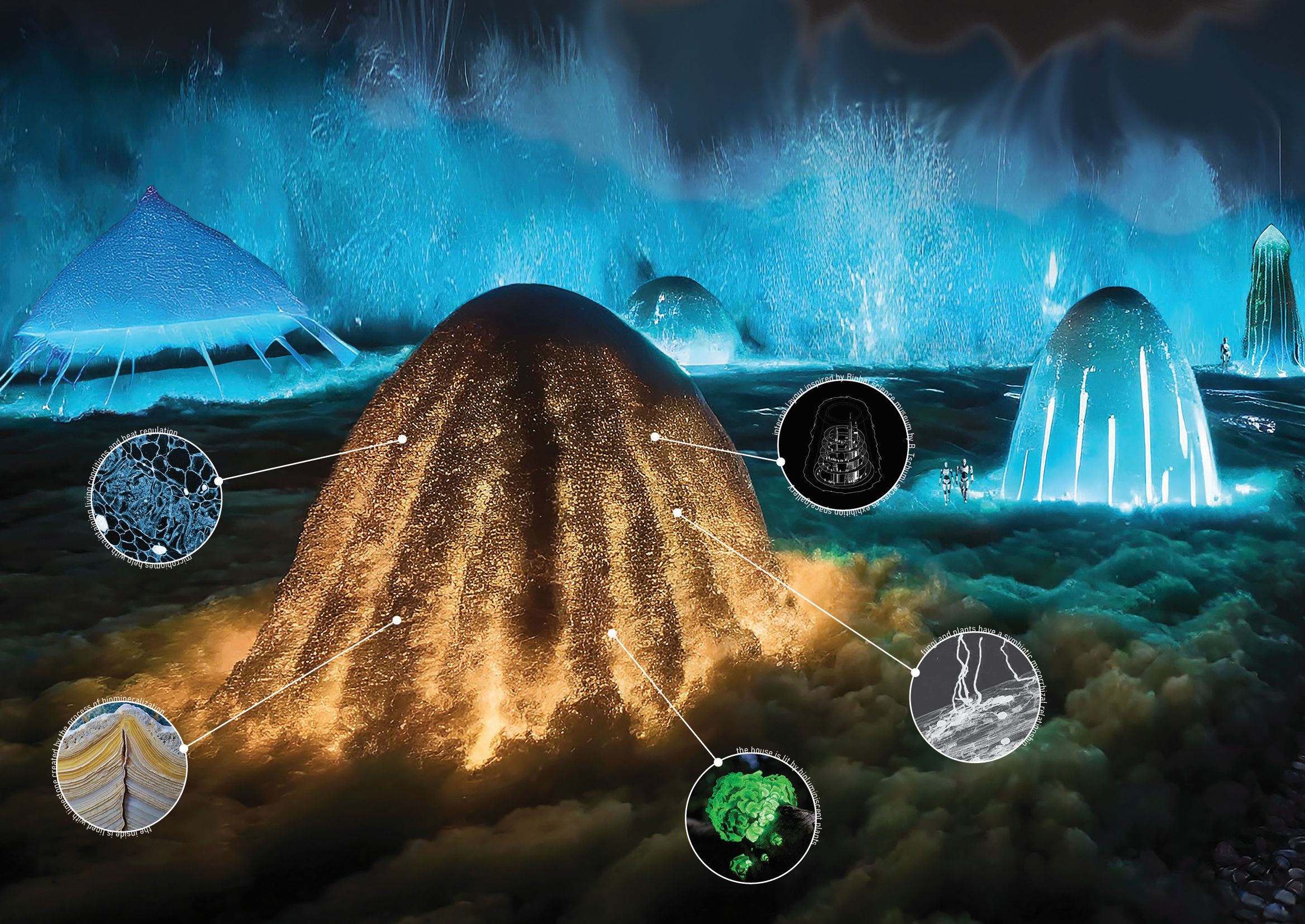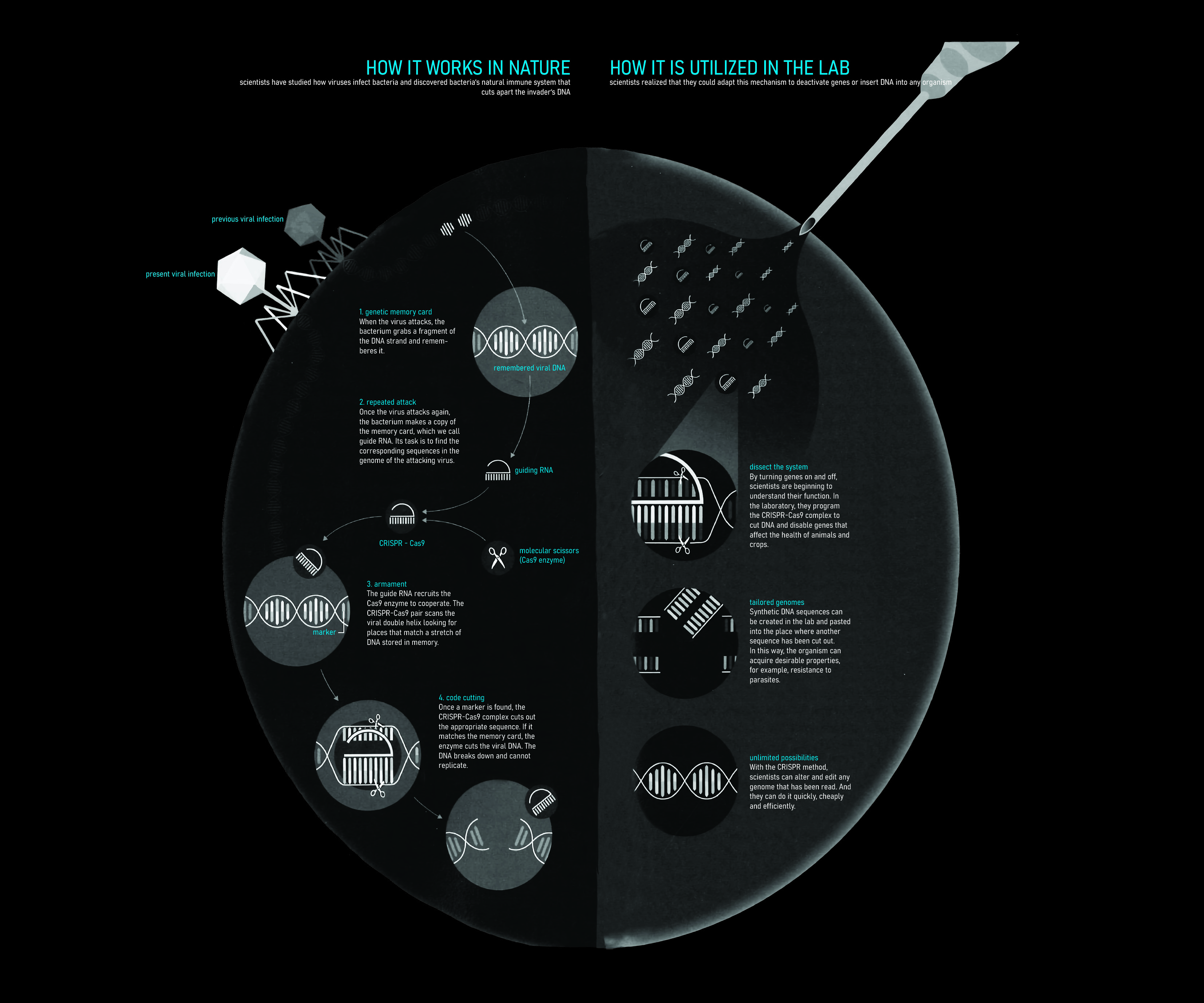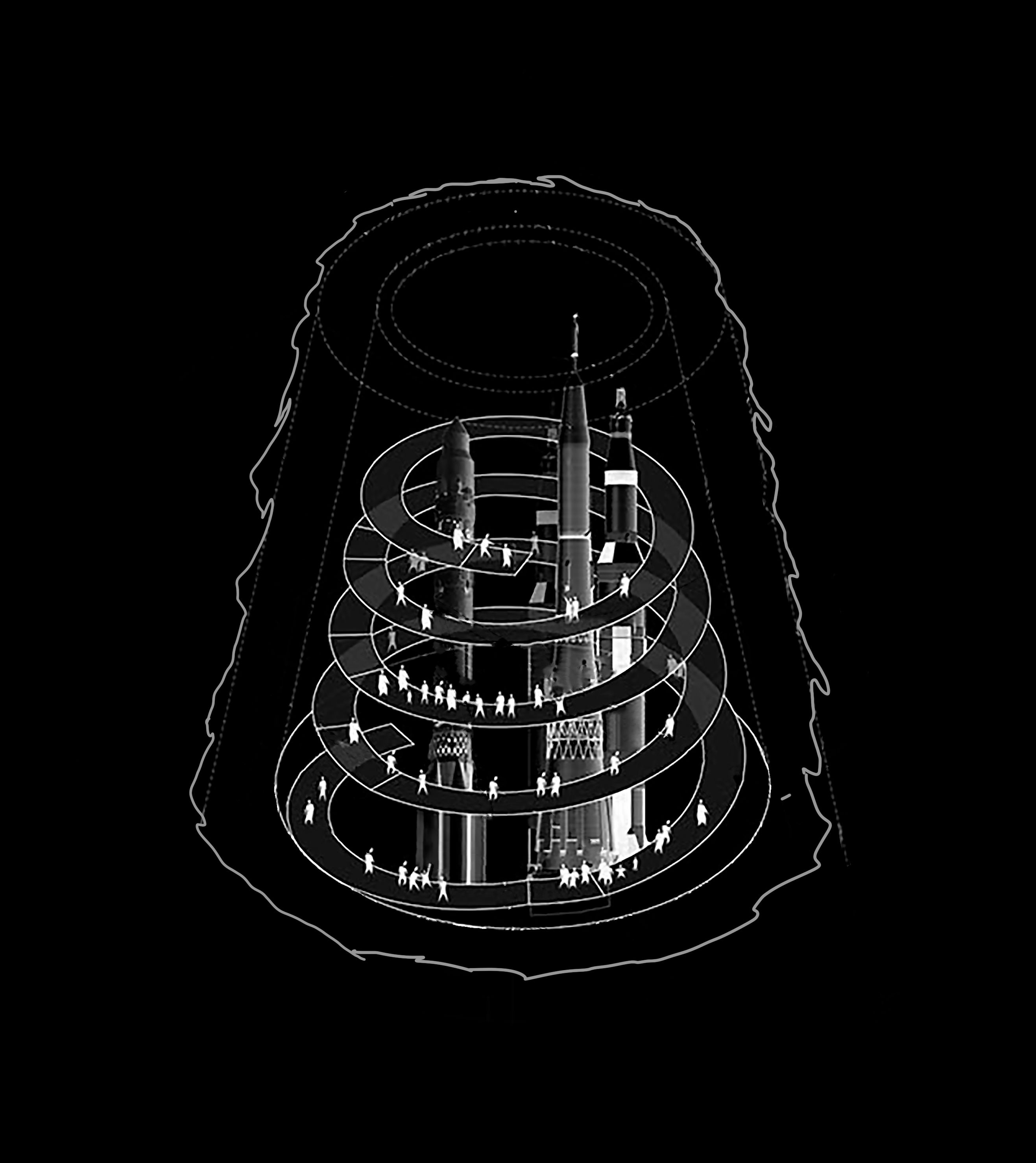Zuzana Talandová | BROKILON
ABSTRACT:
The Brokilon project is a vision to the future. A new approach to building design and use of materials. The project was created with many topics in mind, one of them is the climate crisis and how we as a society have to rethink our approach to building, materials and natural sources. The project in designed with living and biohybrid materials produced mainly on-site, cutting costs for mining, manufacture, transport and assembly/human labor. It does not only save money but also emissions and fuel. The current housing market now produces around 40% of emissions and this is one of possible solutions. The design works as a micro-ecosystem, completing all the roles for a human living environment, but also working in cooperation with nature.
The design aims to be as much self-build and self-controlled as possible, requiring very little human action. The dwelling would be able to grow, self-repair and react to its surroundings. This way houses could renovate themselves and there wouldn´t be need to demolish and rebuild them.
The project explores genome alteration, such as CRISPR and gene synthesis and it’s use in architecture and organism alteration. The field has a lot of potential and these methods are already being implemented for example in medical procedures, but there is still a lot of research for the Brokilon project to happen. Some of the possibilities are yet to be explored.
In the project, CRISPR is used in many places. The main building material is altered mycelium, so it can grow in the shape and enormous size we want and create a protective limestone layer. Some of the plants are altered to emit light. And there are also altered microbiomes, so they can regulate the temperature, filter air, water and soil and help with cleaning out pollutants and toxins via bioremediation.
The main “building” material is mycelium covered in plants. The mycelium and plants are in a symbiotic mycorrhizal relationship, aiding each other in nutrient acquisition. Fungal roots (called hyphae) run through the whole building and also the soil underneath our feet, connecting the houses together, creating a net. Organisms connected through the net share nutrients and information, for example if one organism is attacked by parasites, the others will know. Nutrient and moisture sharing is in some cases crucial, especially for seedlings and germinating seeds. The mycorrhizal network does not only connect plants in one house, but also the houses themselves. From the interior the mycelium is covered in limestone, which it creates through the process of biomineralization; a way organisms can produce minerals. It is the same process by which humans form bones and teeth.
The plants serve many purposes in the house. During the day they create electric current by photosynthesis, (a process that also creates breathable oxygen for humans and sugar for the plants and fungi). During the night, some organisms emit light thanks to the process of bioluminescence, which we could say is reverse to photosynthesis. Sugar and oxygen are needed in order to emit light.
The house will have a complex heating and cooling system, combining three different approaches. The shape of the house is inspired by termite mounds, which contain many ventilation tubes, that can be opened or closed. The mycelium and plants on the façade contain a lot of water, that works as an excellent thermal isolation, containing heat. Lastly. There are microbiomes. They work in symbiosis with the plants and fungi and can help regulate the temperature. They can also clean the air and soil and make the house a healthier living environment. This way we can regulate the temperature inside the house.
As I said, the house contributes to its surroundings. Through the process of bioremediation, it cleans out toxins and pollutants. The organisms involved in this are mainly microbiomes and fungi.
Thanks to most materials used being biodegradable, the house produces very little waste. By metabolic actions, the waste from one process becomes fuel for the next one. This is called a cyclic system. Some chemical compounds, however, can’t be used for following metabolic processes; these compounds will be biodegraded by the process of bioremediation to make sure they don’t have a negative impact on the environment.
|





|

